Top 10 Deadliest Martial Arts in the World
Martial arts are rooted in a rich history that dates back centuries and remains the primary division of self-defense mechanisms in the world. There are many different types of martial arts that each carries a unique technical balance and style.
This article explores the top ten deadliest martial arts in the world, delving into their historical origins, distinct techniques, and the inherent risks they pose. It provides an insightful overview of each martial art's potency in combat and the circumstances under which they can become lethal.
According to our research, the deadliest martial arts in the World is Brazilian Jiu-Jits.u
Top 10 Deadliest Martial Arts in the World List
With an understanding of the potency of martial arts in combat, let’s take a look at our list of the top 10 deadliest martial arts in the world.
1. Brazilian Jiu-Jitsu
Brazilian jiu-jitsu is one of the most practiced self-defense martial arts in the world and as its name suggests, is rooted in Brazil. Jiu-jitsu is deeply focused on combining grappling, ground fighting, and submission techniques.
Brazilian jiu-jitsu was initially developed in 1926 by the Gracie brothers following their learning of the teachings of Japanese judoka Mitsuyo Maeda. Together, the brothers founded Gracie Jiu-Jitsu, which is now considered to be the modernized form of martial art.
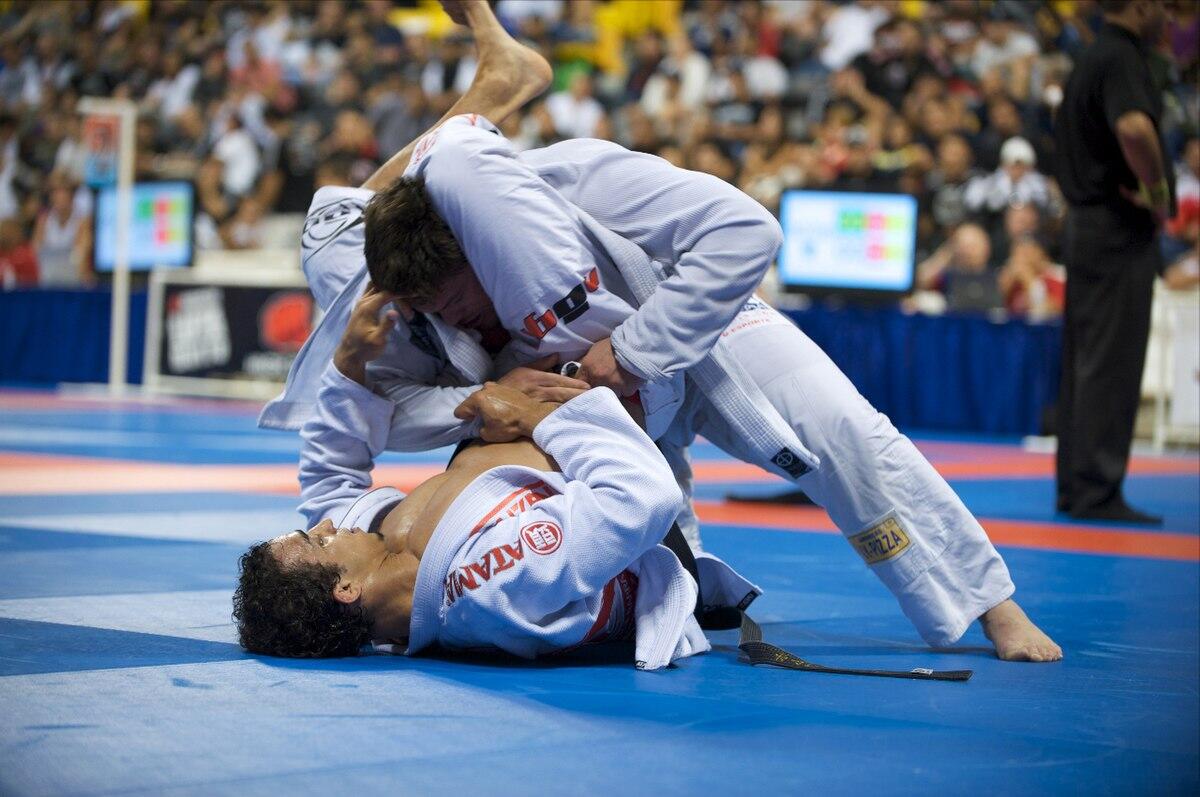
Also known as BJJ, Brazilian jiu-jitsu has evolved over the past century specifically, taking from other prominent martial arts to make an entirely new brand of it.
Brazilian jiu-itsu is widely considered to be one of the safest full-contact martial arts in existence. However, it can be fatal if the teachings of it are used for a purpose that is not representative of self-defense. If done improperly, cervical and spinal locks can severely damage someone’s respiratory and nervous systems. These types of joint locks are actually forbidden in multiple forms of jiu-jitsu due to the possibility of a fatality or severe impact.
The most commonly used equipment in Brazilian jiu-jitsu is protective wear for the ears to prevent cauliflower ear, groin guards, and mouth guards. Rashguards for the torso are also extremely important to avoid bruising and irritation and work in combination with spats that are utilized for the legs.
2. Taekwondo
Taekwondo is another wildly popular martial art that has gained traction worldwide over the past few decades. It utilizes swift movements involving kicks and punches of different heights and power.
This common form of martial art was first taught in the 1940s and 1950s as a spinoff of karate and other Korean and Chinese martial arts. Taekwondo sprouted all over eastern Asia as a direct result of World War II. Many of the teachings seen today in taekwondo were taken directly from military institutions during wartime.

The initial founder of modernized taekwondo, Choi Hong-hi, set forth a philosophical basis for martial art, entitled the Five Tenets of Taekwondo. They are as follows:
- Courtesy
- Integrity
- Perseverance
- Self-control
- Indomitable spirit
Taekwondo is one of the safest breeds of martial arts around due to its low-impact nature of it even at full contact. Many of the strongest kicks and punches associated with taekwondo are done to the body as a stabilizing technique. This is opposed to the philosophies of other martial arts that deal more with the nervous system, head, and neck.
Taekwondo is a relatively easy martial art to learn as a result of the low-cost methods of efficient practice. There is no specific equipment necessary to learn taekwondo.
3. Karate
Similar in nature to taekwondo, karate is rooted in kicking and punching, but also incorporates a series of knee and elbow strikes. In some ancient forms of karate, open-hand techniques and palm strikes are utilized.
Karate is one of the oldest forms of martial arts that is still utilized worldwide in modern times. It initially became popular in the 1880s in the Empire of Japan. Japan was famous for teaching all of its militants some form of karate to be used on the battlefield in hand-to-hand combat.
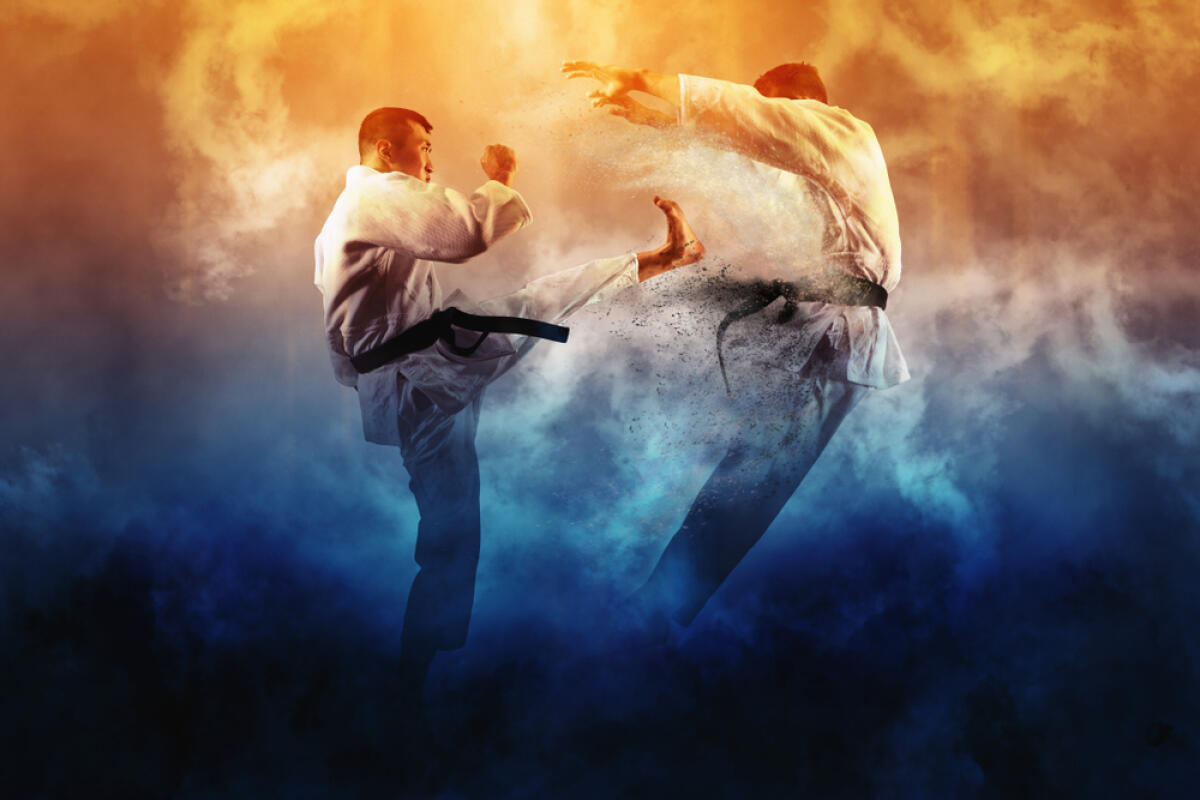
One of the founders of modern karate, Gichin Funakoshi, stated this in the early 20th century about the philosophy of karate:
“Karate is properly applied only in those rare situations in which one really must either down another or be downed by him.”
As the quote from Funakoshi suggests, karate is primarily viewed as a self-defense and reserved type of martial art. It is not meant to be predicated on aggression in any form.
As with taekwondo, there is no true equipment needed for modern karate practice or teaching other than dummy mannequins. This low-cost method of martial art has gained popularity largely due to its widespread accessibility.
4. Silat
Silat is another self-defense martial art that is popular in Southeast Asia. It is one of the oldest forms of martial arts in existence and came about due to the passing of legendary stories from generation to generation. The exact origin of silat is unknown, but many believe that it had its roots developed in the early 15th century.
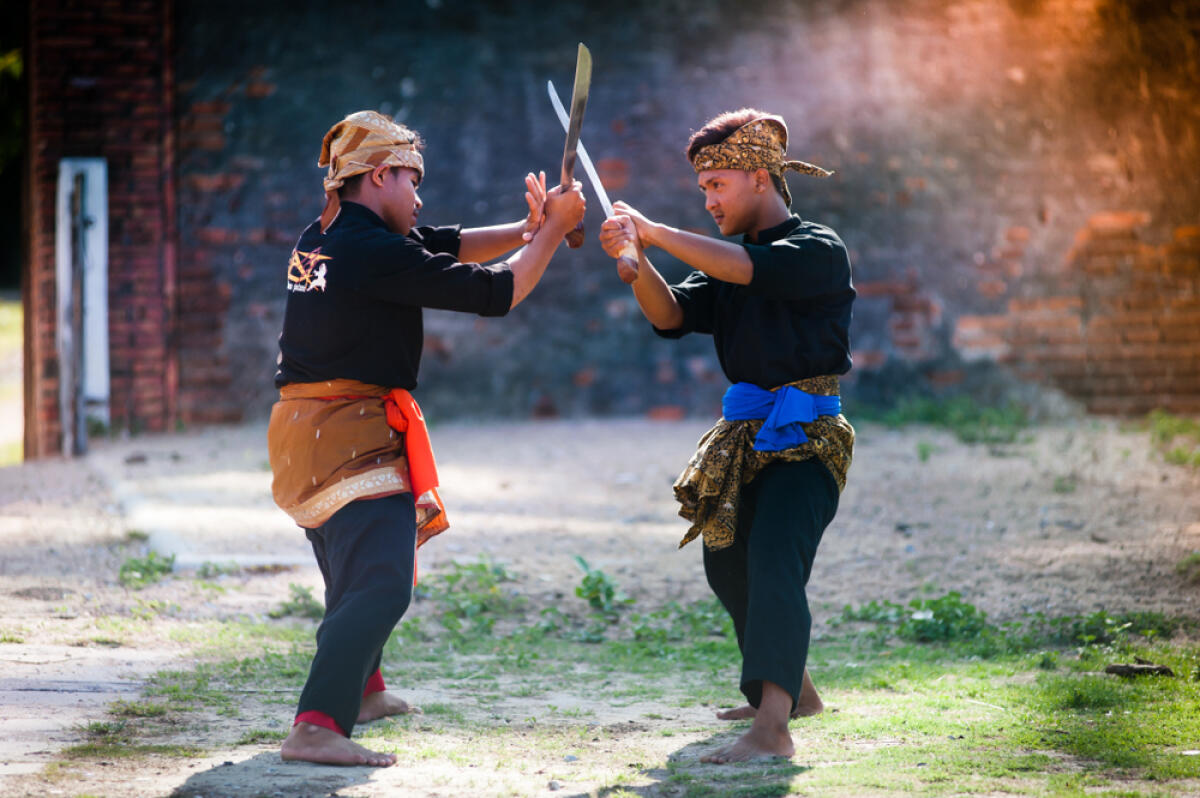
Silat is similar to all other martial arts in that it focuses mostly on strikes and their different variations. However, where silat differs is the emphasis it placed on joint manipulation. Unique to silat is also the usage of weaponry. While some silat students focus on the usage of solely unarmed combat, others develop techniques in armed combat.
This martial art is truly a combination of the philosophies of many different religions and governments. Due to the ethnic diversity of Southeast Asia, each ethnicity has its own take on silat and it can often be called different names by region.
Silat often utilizes weapons, most notably in the form of a kris. A kris is a form of a dagger that is used to fend off opponents and work as a shield more than a stabbing tool.
5. Krav Maga
Krav maga is different than any of the other martial arts that have been discussed for one simple reason. It is viewed as a hybrid focus martial art, meaning that the teachings of krav maga exemplify both self-defense and aggressive techniques. In Hebrew, krav maga translates to ‘contact combat’.
Originally developed in Israel to be used by the Israel Defense Forces, krav maga is a combination of many different disciplines, including judo, karate, and aikido. Krav maga was first seen in widespread fashion in the 1930s and stems from the street fighting culture that existed in Israel at the time.
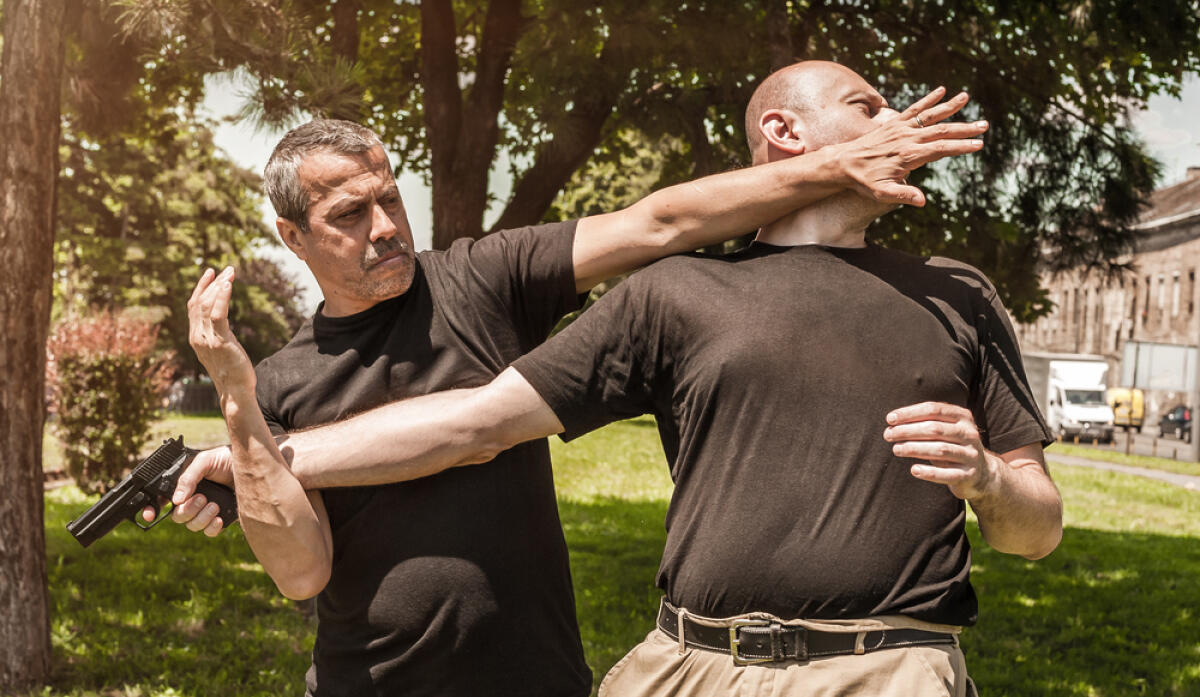
The principles and philosophies of krav maga are quite unique in that they utilize what can be termed over-aggression. Developing physical aggression is one of the key instruments to learning krav maga successfully.
A belief within krav maga is to continue to strike opponents even if they are out of commission. While other disciplines utilize joint manipulation, krav maga strategically attacks opponents’ most vulnerable body parts such as the throat, groin, and eye sockets. There is a solid argument for krav maga being the deadliest martial art in existence due to the intense nature of its’ teachings.
To successfully train in krav maga, there is no need for much outside equipment. Protective gear is important to prevent various injuries as are striking gloves, but it is mostly limited to those items.
6. Combat Sambo
Combat sambo, initially developed by the Soviet Union in the mid-20th century, is a recognized combat sport and style of wrestling. Combat sambo is a direct offshoot of many different disciplines including judo, kickboxing, and Japanese jiu-jitsu.
Combat sambo is one of the most popular types of martial art in Russia today, propped up by the multitude of different types of it. These include special sambo, self-defense sambo, and freestyle sambo, just to name a few.
It is still a highly practiced discipline across the world and is viewed mostly as an aggressive takedown martial art. Combat sambo can absolutely be deadly if used for intended purposes.
In most cases, combat sambo does not require any form of equipment outside of ear protection and rashguards.
7. Kung Fu
Kung fu is one of the oldest rooted martial arts in existence, stemming from ancient China. It separates the internal and external into two separate disciplines under the same branch with an emphasis on inner peace to fully unlock the external ability.
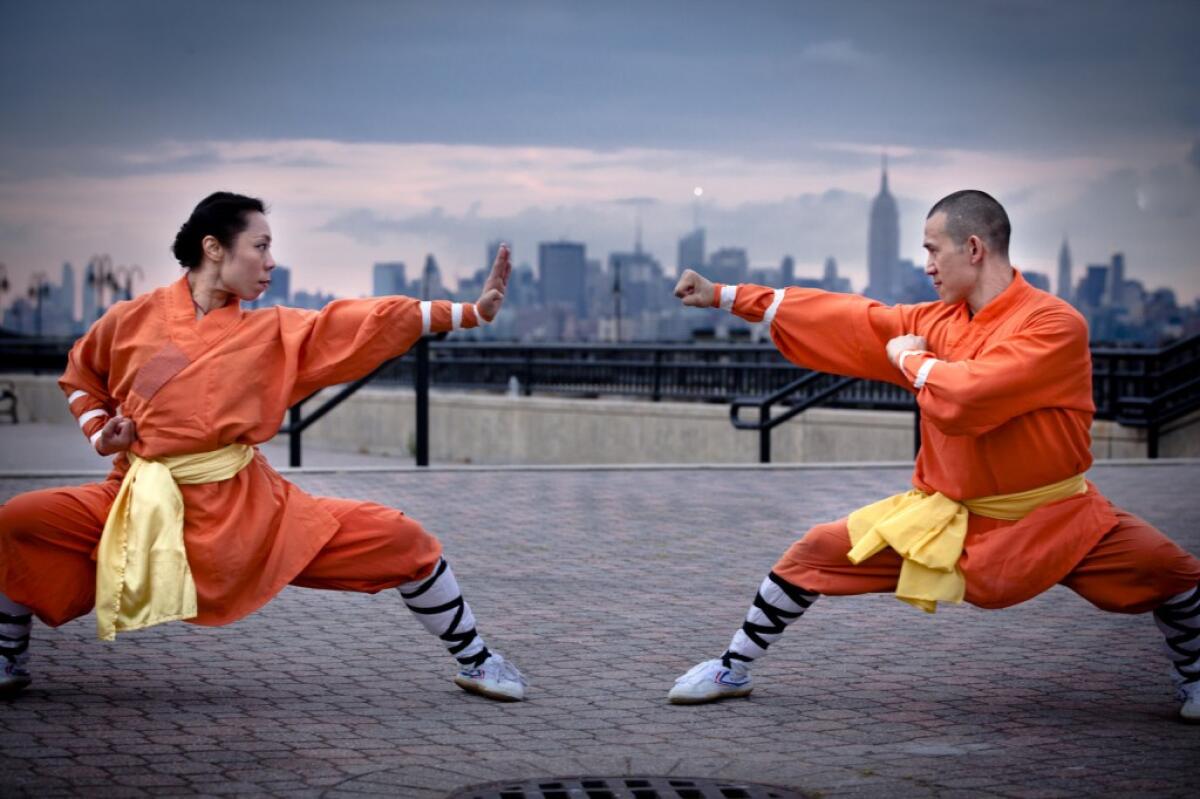
There is a heavy emphasis placed on meditation within kung fu as well. One of the quotes that best exemplifies the philosophies of kung fu, translated to English:
“Train both Internal and External. External training includes the hands, the eyes, the body, and the stances. Internal training includes the heart, the spirit, the mind, breathing, and strength.
Kung fu is certainly not one of the deadliest martial arts on this list, but it can be a potent one if used for an unintended purpose.
While kung fu does not necessarily require weapon training, most traditional Chinese styles of martial art utilize weaponry to some degree. Outside of this, limited equipment is necessary to train in kung fu.
8. Muay Thai
Muay Thai, also known as Thai boxing, is a combat technique that emphasizes stand-up striking, punching, and kicking. It is still a heavily used discipline in Mixed Martial Arts (MMA) despite its’ historic origins.
Created in Thailand in the 16th century, Muay Thai is deeply rooted in Thai folklore with superficially simplistic techniques that are far more difficult to master in reality. Elbow strikes, knee strikes, and clinching are key ingredients to successful training in Muay Thai.
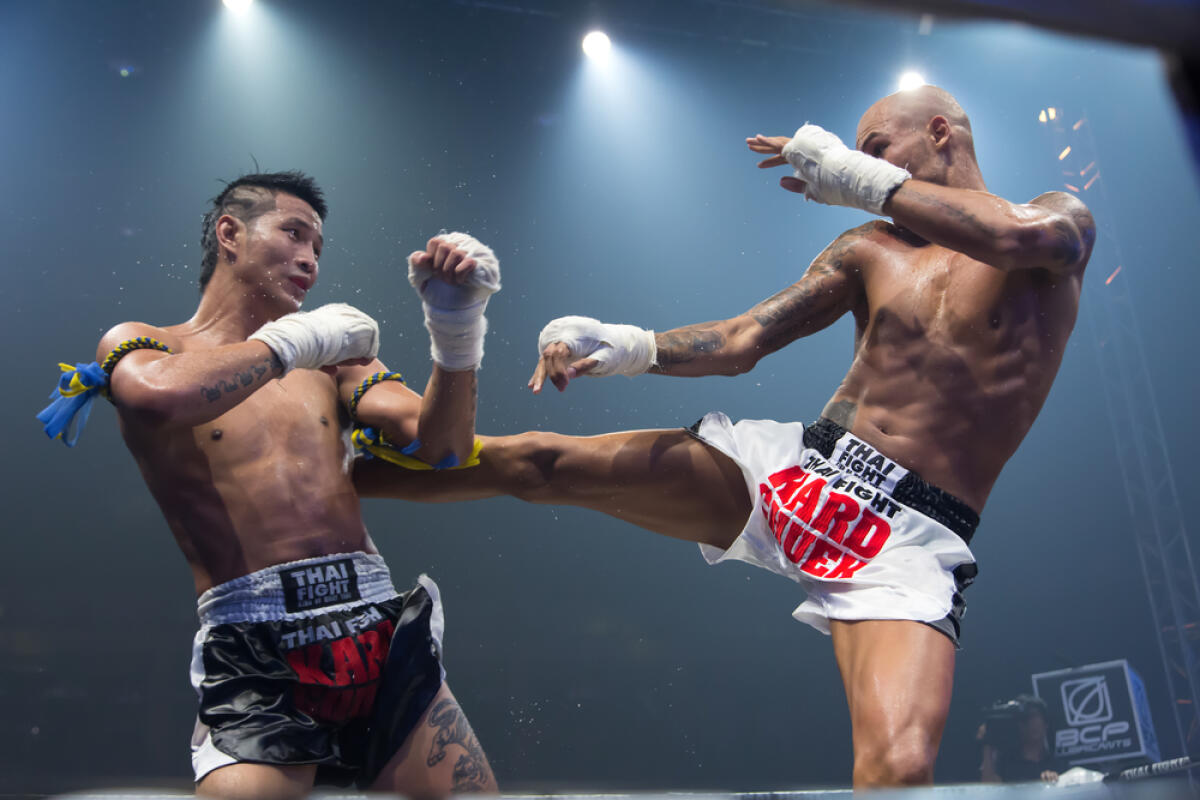
Another important aspect of Muay Thai is the utilization of attackers’ blows against them. This is known as parrying. As a punch or kick is delivered by an opponent, Muay Thai teaches to deliver open-handed attacks to the forearm to redirect the blow.
Muay Thai also teaches us to evade and avoid attacks in combat but to anticipate them and use disruptive techniques as a counterattack. It can be a deadly martial art if the clinching techniques are overused to the point of putting an opponent out of commission by tracheal injury.
Traditional Muay Thai fighters wear a headband, known as a mongkhon, and an armband, known as a pra jiad.
9. MMA
Mixed Martial Arts, abbreviated as MMA. is practically a collection of many different disciplines and martial arts families into one. Many of the world’s greatest fighters learn MMA and take from the different philosophies that are out there.
For example, by watching an MMA bout, the influence of martial arts like Muay Thai, kung fu, and Brazilian jiu-jitsu is apparent. It is not limited to those three disciplines either. The emphasis a fighter places on certain disciplines in Mixed Martial Arts is entirely up to them, but some have proven to be better for aggressive techniques than others over time.
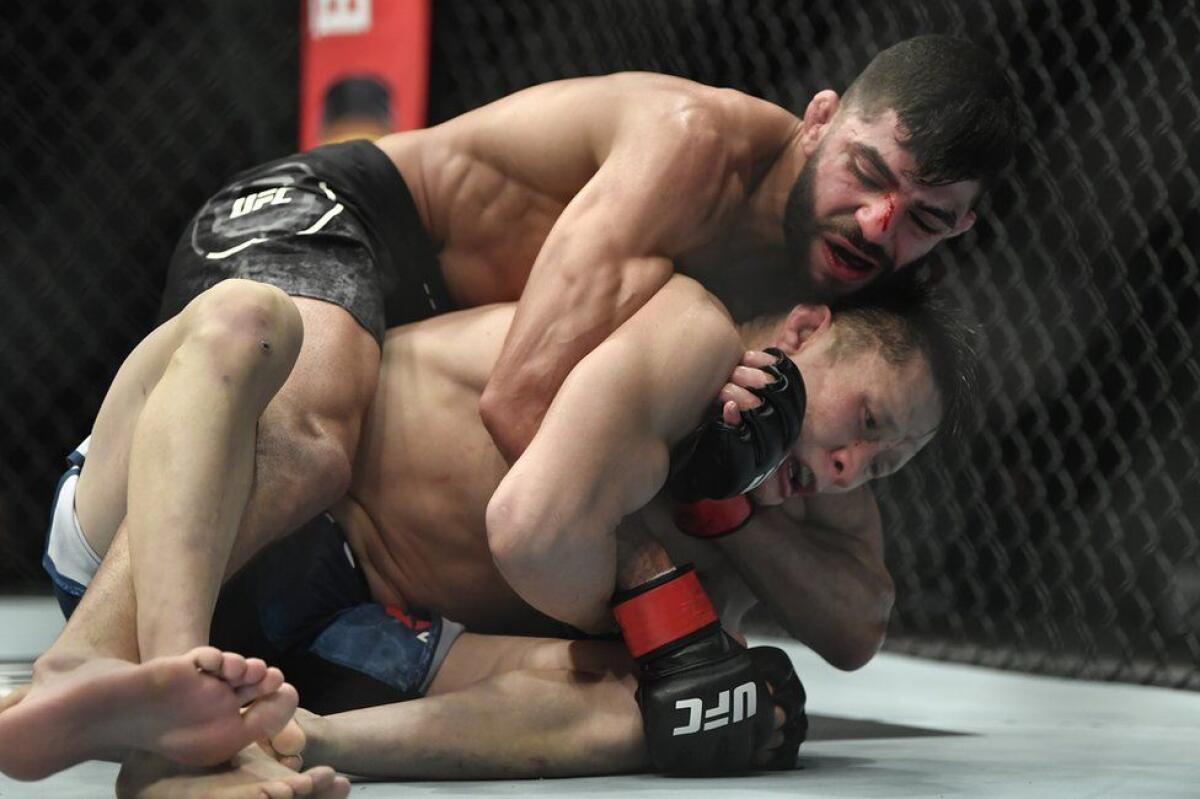
The first true fighting of MMA came about in the 1970s, but become popularized with the creation of the Ultimate Fighting Championship (UFC) in 1993. The UFC was founded by the Gracie family, the same family who laid the foundation for modern Brazilian jiu-jitsu.
MMA is currently the most popular martial art discipline in the United States as a result of the UFC and is steadily gaining traction all over the world. The incorporation of multiple disciplines is tough to master and thus, makes MMA extremely difficult. It can certainly be deadly given the combination of submission techniques utilized and the number of powerful blows that can be dealt.
MMA fights are now available to stream on Lines.com.
10. Boxing

Boxing is one of the simplest forms of martial arts in existence and is considered one of the purest forms of combat. The reason for its simplicity is that the limitations placed on fighters in an organized match are heavy. In traditional boxing, fighters are only allowed to punch their opponents.
Kickboxing is a tad different as kicking is incorporated into standard boxing, but it still places a limit on the attacks that a fighter can conduct.
Boxing is not only one of the most ancient forms of martial art–it is one of the most ancient forms of sport, in general. Dating back to 688 B.C. in Ancient Greece, boxing was an Olympic sport. While boxing has changed dramatically since then, many of the remnants of Greek boxing methodology are still evident today.
Boxing requires more equipment than most other martial arts. In both practice and professional settings, fighters need protective boxing gloves in order to fight. In practice, most fighters utilize some form of headgear.
Way of Martial Arts
Despite the many disciplines within martial arts, many of them exemplify similar characteristics. One of the most glaring similarities between all of them is a reliance on self-defense. Despite some disciplines emphasizing aggression, namely Muay Thai and krav maga, most of the teachings of each discipline state that they should only be used when confronted as a counterattack.
Learning these various types of martial arts is beneficial for a variety of reasons. This especially applies to the renditions that preach about inner sanctity.
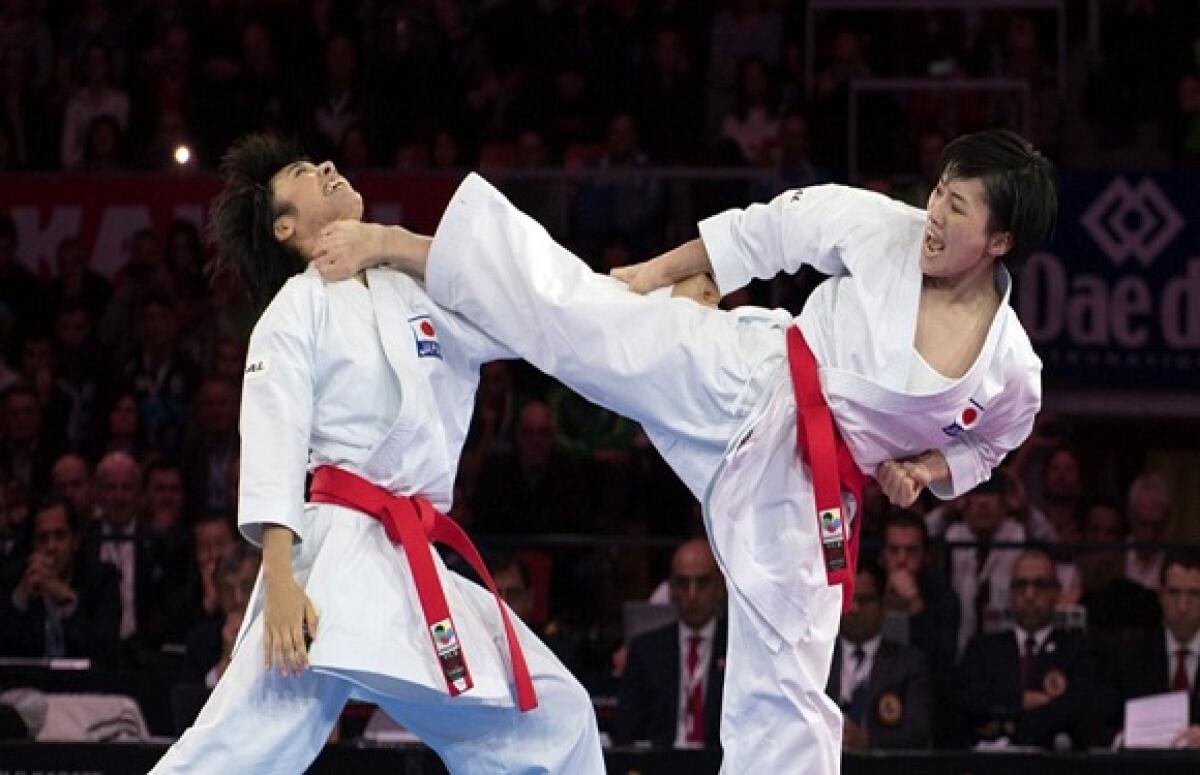
Conclusion
All in all, martial arts are by definition an art form. While they are unique to any other type of art, there is a certain beauty residing in each discipline. Given the wide range of types of martial art, those looking to get into a discipline can find one quite easily that suits their desires to the fullest extent.
On the other hand, these martial arts can be lethal in most cases. However, this most often comes from the wrongful usage of each one. As martial arts’ philosophical teachings holistically preach counteraggression as opposed to confrontation, they can still be used to cause damage that can be fatal.
Martial arts are not just bodily exercises. A great deal of the impact that they have is a mental one. Outside of these aspects, fighters learn how to manipulate the human body in a way that benefits them in combat. These manipulation techniques can be utilized to cause harm to opponents outside of the realm of controlled combat situations.
FAQ
Q: What type of people are martial arts best suited for?
A: Martial arts have proven to have the greatest impact on those suffering from ADHD. Additionally, those who have some desire to learn self-defense can learn a great deal from the teachings and practices of a martial art of their choosing.
Q: In what situations should I utilize my training in martial arts?
A: Most of the disciplines in the martial arts family preach a lack of aggression. While there are some exceptions to this rule, most forms do advocate for only using martial arts as a means of self-defense and counteraggression.
Q: How many people die each year in martial arts-related activities?
A: The answer to this question varies from discipline to discipline. In boxing, there have been an average of 7.82 deaths per year over the past three decades. However, that number is 104.79 deaths annually for mixed martial arts. Considering the wide range of disciplines available, it can be estimated that around 500 people die every year from martial arts-related activity.
Our editorial content strives to be highly informative and educational to our audience, especially for visitors who are new or relatively new to analyzing and predicting sporting event results. All of our content is created by informed writers with backgrounds in their subject area and reviewed for omissions or mistakes.
Our editorial team is run by individuals with many years of experience in digital publishing, editorial, and content production. Our editorial content is always marked clearly in any instances where it may be sponsored by a third party, though it is still reviewed by our staff to ensure it remains consistent with our company mission.
- Popular
- Latest







